Imagine stepping onto your balcony or into your tiny backyard, only to find a vibrant array of fresh vegetables thriving in the space you thought was too small for anything substantial. Whether you’re a seasoned gardener or just beginning to dabble in the joys of planting, the magic of growing your own veggies in small spaces is both rewarding and surprisingly achievable. In today’s world, where urban living often means limited space, cultivating a lush vegetable garden is not just a satisfying hobby but also a practical step towards sustainability and self-sufficiency.
In this article, we’ll unlock the secrets to transforming modest areas into productive veggie havens, offering insights that cater to both novices and green-thumbed veterans. You’ll discover clever strategies for maximizing space, selecting the best varieties for compact environments, and creating conditions that help your plants flourish. With a bit of creativity and the right guidance, you’ll find that even the smallest of spaces can yield a bountiful harvest, bringing both flavor and freshness to your kitchen. So, roll up your sleeves, and let’s dive into the delightful journey of growing fresh veggies in spaces you never thought possible.
Select Space-Efficient Vegetable Varieties
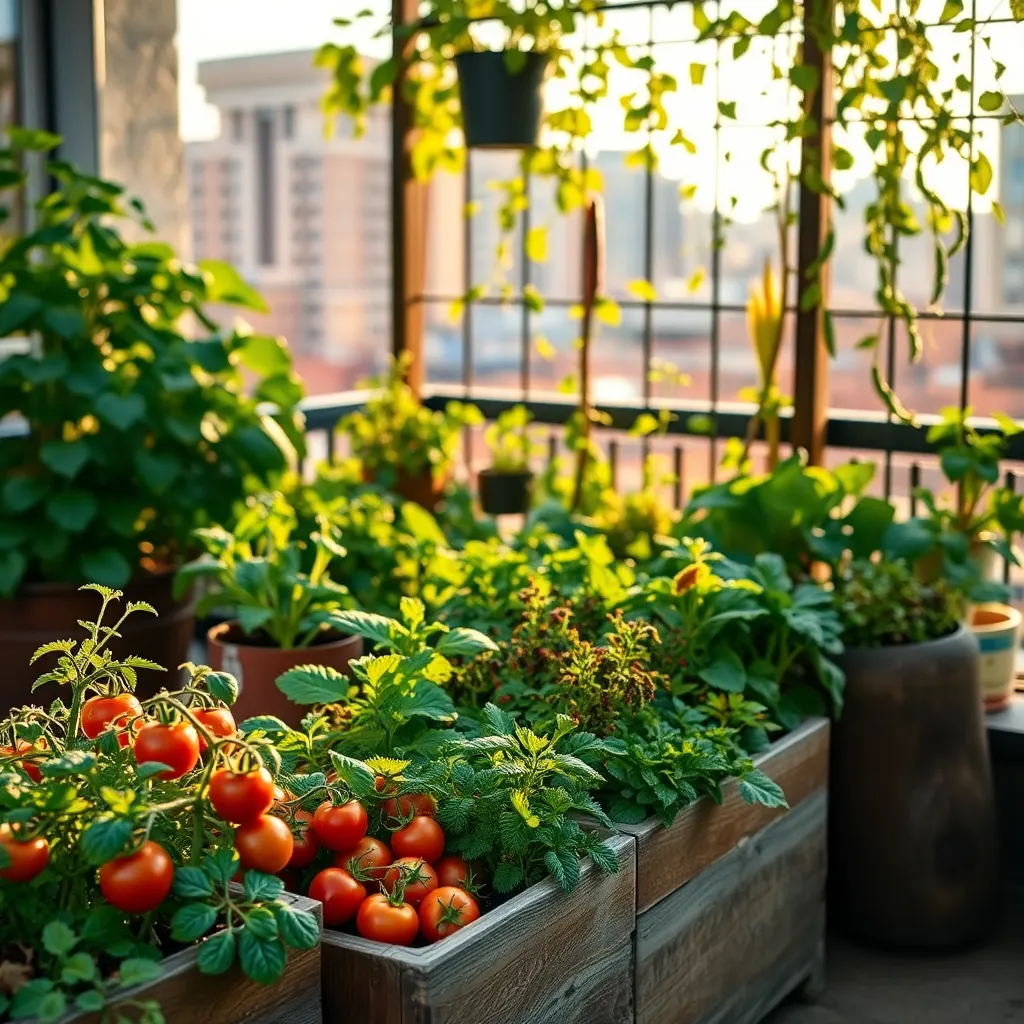
When growing vegetables in small spaces, choosing the right varieties can make a significant difference in yield. Opt for compact or dwarf varieties that are specifically bred to thrive in limited areas without sacrificing productivity.
Consider vegetables like bush beans, which grow well in containers or narrow garden beds. They require full sun and consistent watering, and they can produce an abundant harvest without sprawling.
Tomatoes are a favorite among gardeners, and for small spaces, determinate or patio varieties are ideal. These plants stay compact, need staking for support, and thrive in well-draining, nutrient-rich soil with regular watering.
Leafy greens such as spinach and lettuce are excellent choices for tight quarters. They can be harvested continuously, and a shallow container with well-draining soil and partial shade will keep them thriving.
For advanced gardeners, try vertical growing techniques with vining crops like peas and cucumbers. Utilize trellises or vertical planters to maximize space, ensuring they have ample sunlight and regular watering to develop properly.
Optimize Container and Soil Choices
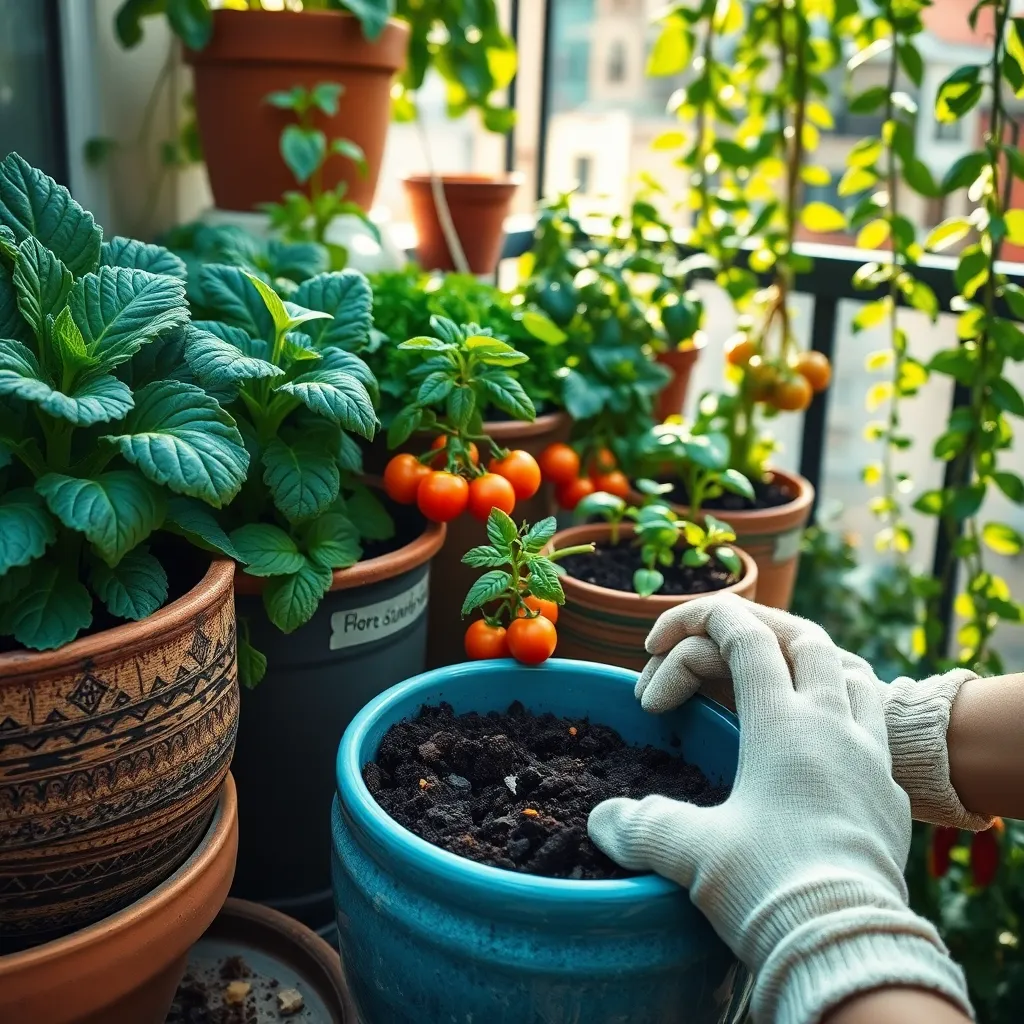
When growing vegetables in small spaces, choosing the right container is crucial for success. Opt for containers that are at least 12 inches deep to give root systems enough room to thrive, and ensure they have adequate drainage holes to prevent waterlogging.
Consider using lightweight materials like plastic or fabric pots for easy mobility and to minimize weight. Self-watering containers are a smart choice as they help regulate moisture levels, benefiting beginners who might struggle with watering consistency.
For optimal plant growth, select a high-quality potting mix rather than garden soil, which can compact and restrict root growth. A mix with added perlite or vermiculite will improve aeration and drainage, ensuring that your veggies have the best possible environment.
Ensure your container soil is rich in nutrients by incorporating organic matter such as compost or worm castings. This addition not only boosts nutrient content but also enhances soil structure, promoting healthy root development and overall plant vigor.
Ensure Adequate Sunlight Exposure
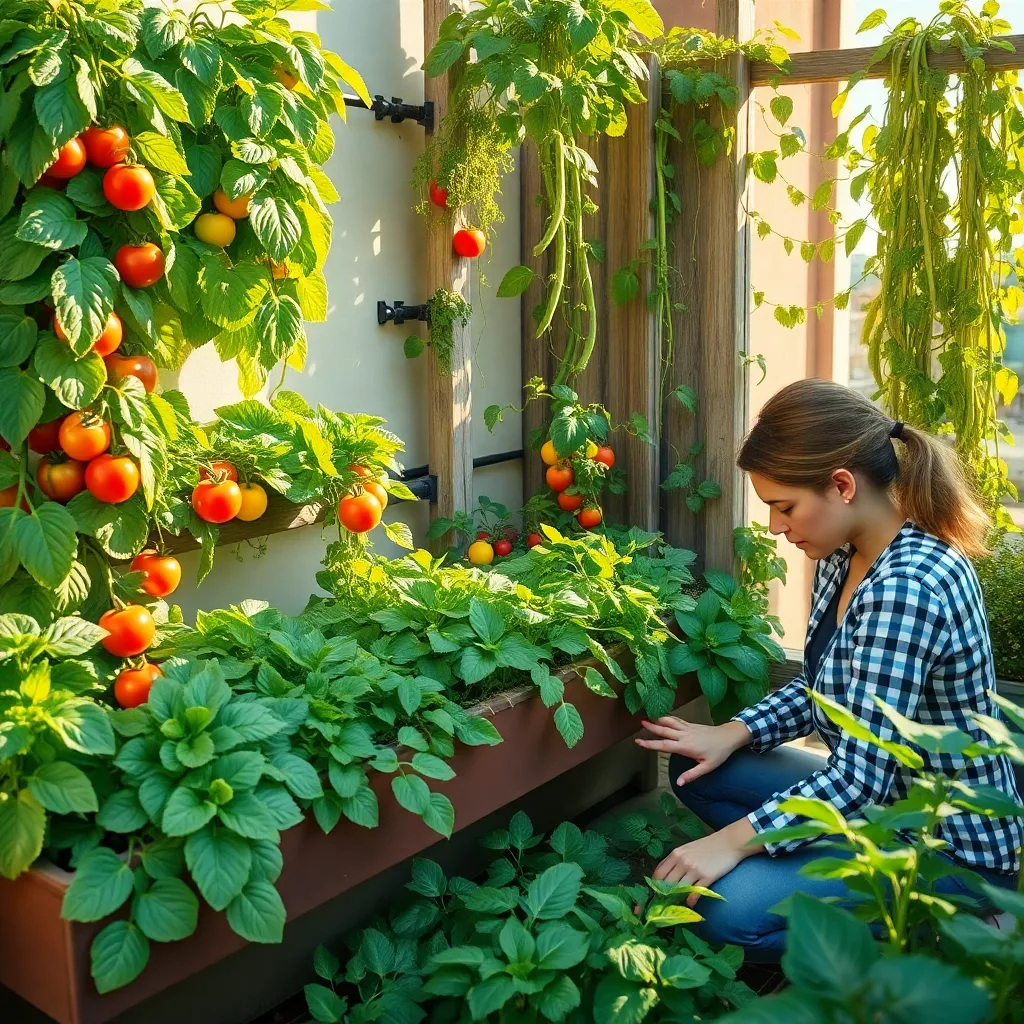
Maximizing sunlight exposure is crucial for growing vibrant and healthy vegetables in small spaces. Most vegetables require at least six to eight hours of direct sunlight daily to thrive and produce bountiful harvests.
Position your containers or planters in the sunniest spot available, such as a south-facing balcony or patio. If sunlight is limited, consider using reflective surfaces like mirrors or white walls to amplify the available light.
For those living in particularly shaded areas, select vegetables that tolerate lower light conditions, such as lettuce, spinach, or radishes. Employing vertical gardening techniques can also help by elevating plants to capture more sunlight and minimize shading from other plants.
Advanced gardeners might consider the use of grow lights to supplement natural sunlight, especially in urban settings with restricted light access. Ensure grow lights are positioned about 6 to 12 inches above the plants and are on for about 12 to 16 hours a day to mimic natural daylight.
Implement Vertical Gardening Techniques
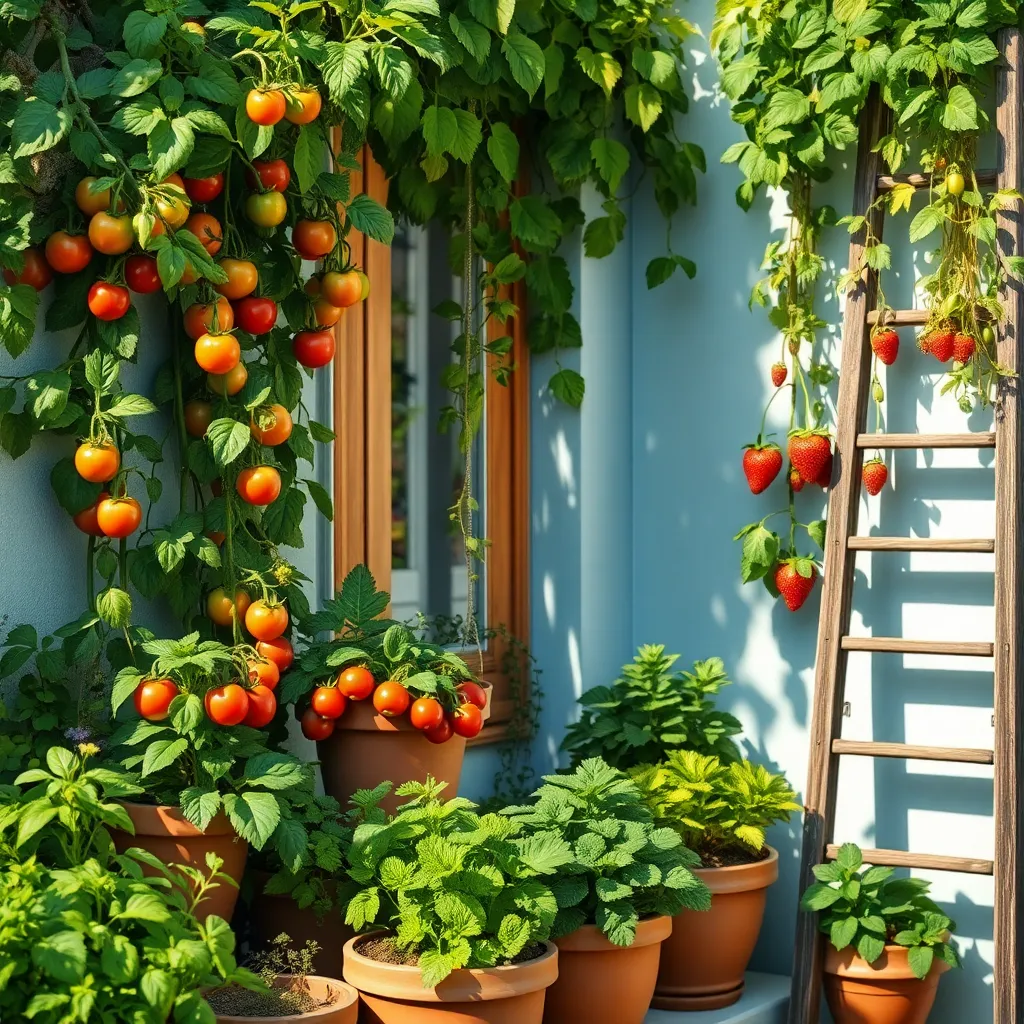
Vertical gardening is an excellent solution for maximizing space in small gardens. By utilizing vertical space, you can grow more plants without needing a large plot of land.
Consider using a variety of structures like trellises, wall planters, and hanging baskets to create your vertical garden. These tools help support your plants as they grow upwards, providing ample room for their roots to flourish.
Start with easy-to-grow veggies like peas, beans, and tomatoes, which naturally climb and thrive in vertical setups. Ensure these plants receive adequate support by tying them gently to your trellis or frame using soft garden twine.
For those looking to get creative, you can repurpose materials to create vertical planters. Old wooden pallets, for instance, can be transformed into rustic, space-saving garden walls.
Ensure your vertical garden receives sufficient sunlight, ideally six to eight hours a day. Regular watering is crucial, as plants grown vertically may dry out faster; consider installing a drip irrigation system for consistent moisture.
For advanced gardeners, experiment with hydroponic systems to grow vegetables vertically without soil. This technique can significantly boost plant growth rates and yields, making it a rewarding challenge for those ready to try something new.
Practice Consistent Watering and Care
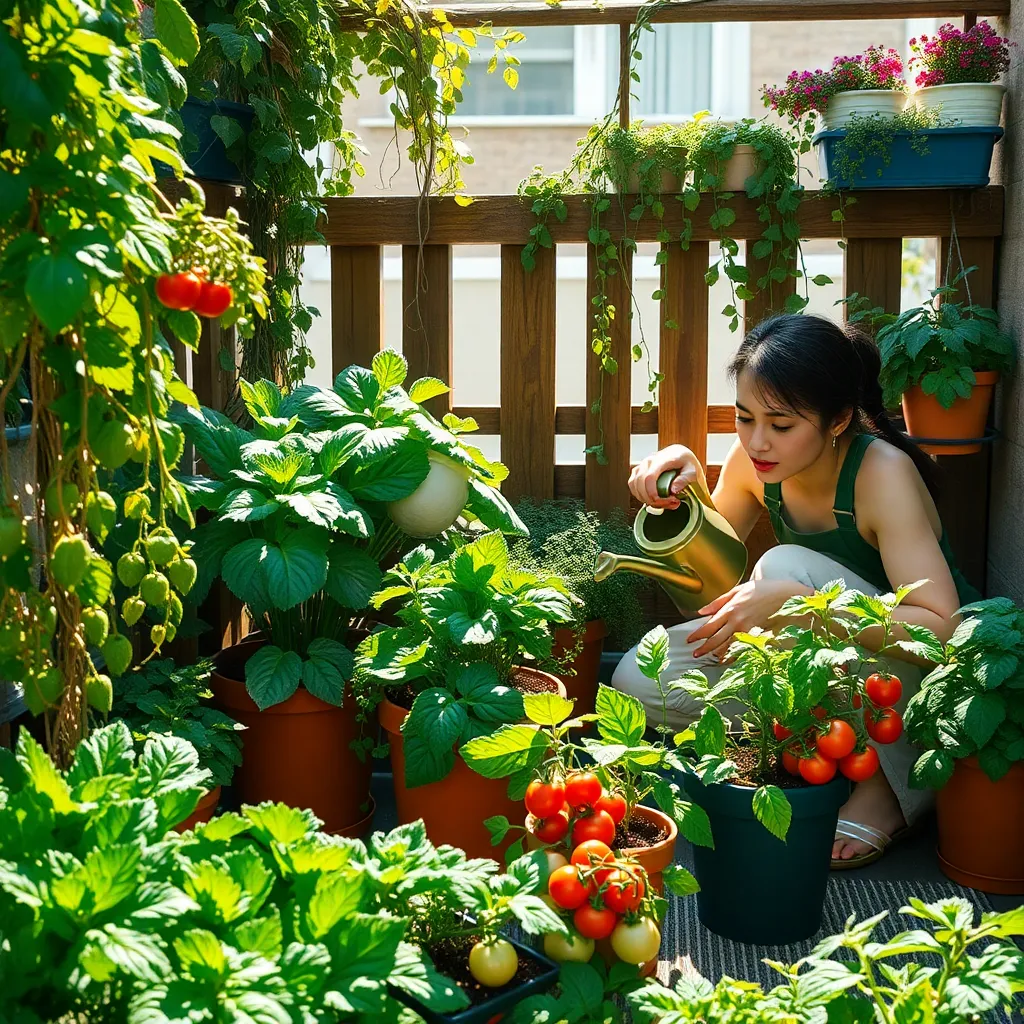
Consistent watering is crucial when growing vegetables in small spaces, as limited soil volume can lead to rapid drying. Use a watering can with a narrow spout or a drip irrigation system to ensure even moisture distribution without overwhelming the plants.
For small-space gardens, it’s essential to monitor the soil moisture daily, especially during hot weather. Insert your finger about an inch into the soil—if it feels dry, it’s time to water.
Consider the specific needs of each vegetable in your garden, as some may require more frequent watering than others. For instance, leafy greens like lettuce need consistently moist soil, while herbs often prefer slightly drier conditions.
Advanced gardeners can improve water retention by incorporating organic matter, such as compost or coconut coir, into the soil. This not only helps maintain moisture but also provides essential nutrients to your plants.
Regular care also involves checking for signs of pests or disease, which can spread quickly in confined spaces. Inspect the leaves and stems regularly, and remove any affected parts to prevent further damage.
Maintaining a healthy garden means keeping an eye on plant health and responding promptly to any issues. A little attention each day will go a long way in ensuring your vegetables thrive in their compact environment.
For those looking to maximize their small-space garden, consider using mulches to reduce evaporation and maintain consistent soil temperatures. A layer of straw or wood chips can significantly decrease the need for frequent watering, making your gardening efforts more efficient.
Conclusion: Growing Success with These Plants
In “How to Grow Fresh Veggies in Small Spaces,” we explored five essential relationship concepts to enhance your gardening journey. First, we delved into the importance of communication, much like understanding your plant’s needs for optimal growth. Next, we highlighted the significance of patience, allowing time for both relationships and plants to flourish. We also discussed adaptability, encouraging flexibility in nurturing both human connections and garden spaces. Trust in the process was emphasized, reminding us of the faith required in relationships and gardening alike. Lastly, we touched on the joy of shared experiences, whether it’s harvesting veggies or creating cherished memories together.
As your next step, choose one relationship concept from this article to focus on this week, whether it’s enhancing communication or embracing adaptability. Make it a priority in your interactions, and witness the positive changes unfold.
Don’t forget to bookmark or save this article for easy reference as you continue to cultivate both your relationships and your garden. Remember, with dedication and care, both can thrive beautifully. Here’s to your future success, where nurturing small spaces and meaningful connections lead to abundant growth and joy.

